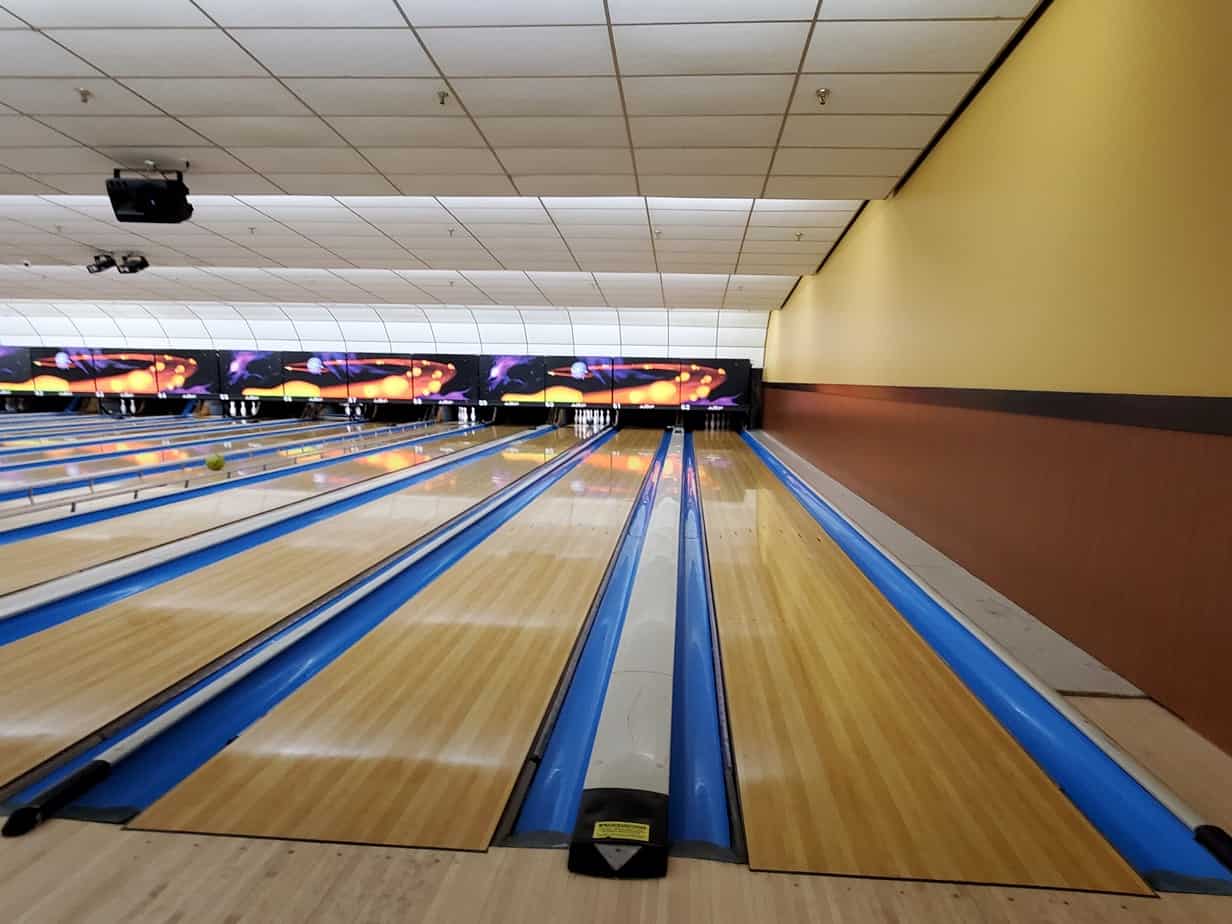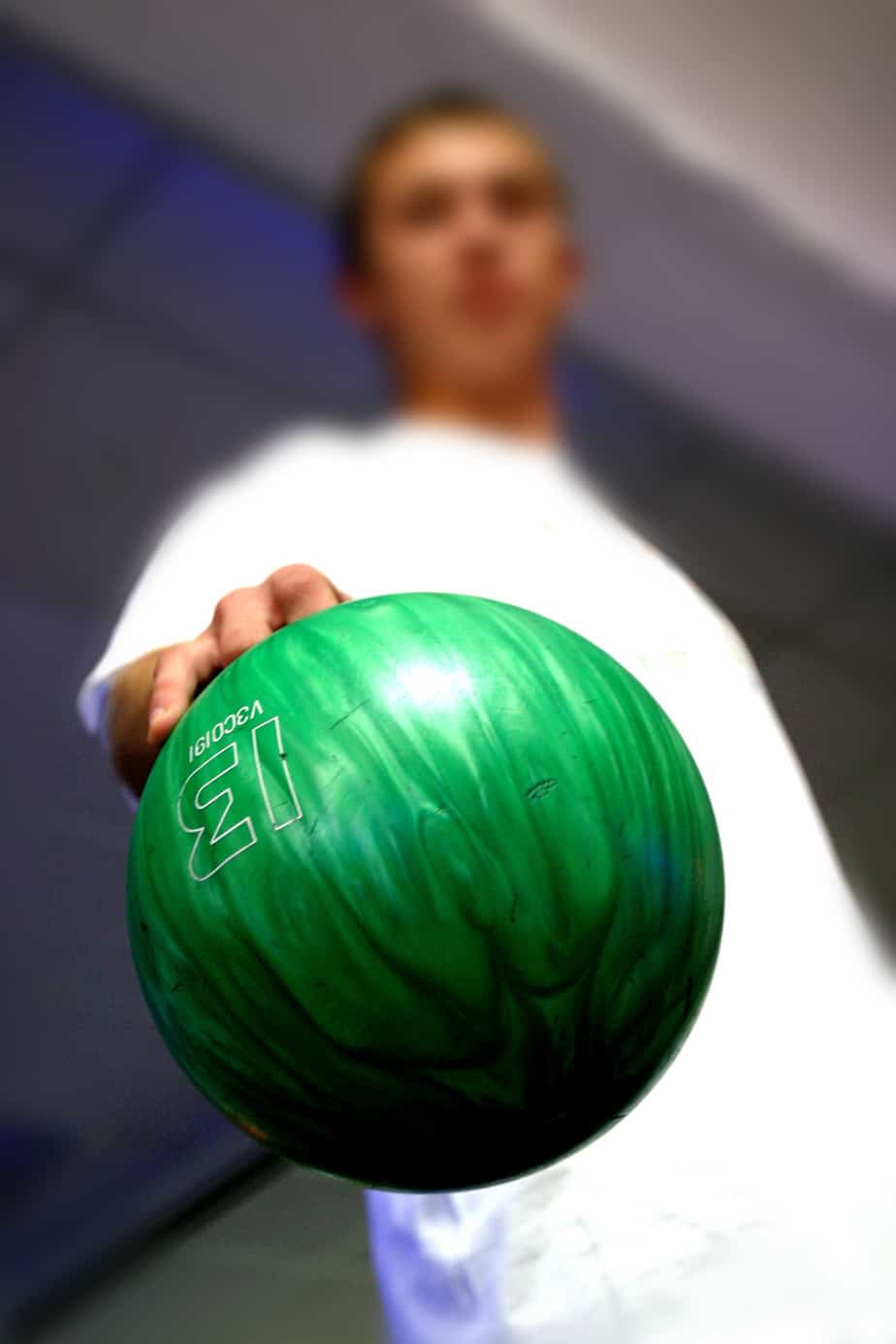My nephews and I bowl often, I dont drop my bowling ball but my nephews sometimes do. They always worry that they will dent the bowling lane or break the house ball. Neither ever happen but it did make me wonder if it was possible to dent a bowling lane. I tent to loft my bowling ball sometimes, so I was curious for myself as well.
Truth is that bowling lanes do dent, but not newer ones made from synthetic wood. You’ll most likely never run the risk of denting a bowling lane unless you bowl at an old bowling alley. However, on the off chance you do bowl at a bowling alley of at least 70 years or older be gentle when bowling, maintaining real wood bowling lanes is very expensive.
are bowling lanes made out of real wood?
Wood, wood with overlays, or synthetic material can be used to construct bowling lanes. To protect the lane surface from the friction of the bowling ball, the oil must be applied to a portion of the lane on all lanes. The length of the oil will vary, but most centers will oil about two-thirds of the lane, leaving the end dry (no oil). From the foul line to the center of the headpin, each lane is 60 feet long.
The Wooden Lanes
Originally, bowling lanes were made of maple and pine wood. The front and back of the lanes are made of hard maple, while the middle of the lane is made of softer pine wood. Because the boards are spliced together, it is easy to see where the lane transitions from maple to pine. Depending on how busy the bowling center is, wood lanes require maintenance every one to two years. Although wood lanes are no longer manufactured, you may still find them in some older bowling alleys today.

Overlays Made of Wood
Some wood lanes have a clear overlay over the surface to protect and extend the life of the lane and reduce maintenance. Most of the time, the overlay only covers a portion of the lane that receives the most wear and tear from the bowling ball.
Lanes Made of Synthetic Materials
Today, all new lanes are made of a synthetic material. The synthetic material has a much harder surface and an image that resembles wood lanes. Synthetic lanes are manufactured by various companies and have varying degrees of hardness, but they are all much harder than wood lanes. Other than cleaning and applying oil, the lane surface requires no maintenance.
Lane Delineation
All modern lanes are made of 39 boards and have lane markings to assist bowlers in targeting.
The first set of markings is 7.5 feet from the foul line and consists of indicator dots. The second set of markings consists of arrows 15 feet from the foul line. The third set of markings known as range finders can be found on some synthetic lanes. Range finders begin at 34 feet and end at 43 feet from the foul line. Each range finder measures 3 feet in length. Bowlers who roll a hook ball use range finders to determine where the ball changes direction before entering the pins.
Wooden lanes, on the other hand, deteriorate over time, and maintaining them in bowlable condition becomes increasingly expensive as they age. Synthetic lanes are becoming more popular. They are typically harder than wooden lanes, though with advances in bowling ball technology, this is less of an impediment to scoring than it once was, and they are usually easier to maintain and condition.
what would happen if a bowling lane became dented?
In bowling, lofting (by a bowler) refers to throwing a bowling ball a short or long distance down the lane. This is typically accomplished with the bounce-pass technique, but it can also be accomplished with a straight ball. Lofting is sometimes discouraged by the bowling community and bowling alley employees because it can damage the ball and the lanes. This, however, has been disproven numerous times.
Lofting will almost never damage a ball, and it will almost never damage lanes. But only if the lanes are man-made. Many bowling alleys that use wood for their lanes will either have signs warning bowlers not to loft or will have an employee tell them not to. A lofted ball can actually dent wooden lanes.
Significant damage and wear and tear caused by the constant use of a regular wooden bowling lane over time would then require the lane to be put out of service. Otherwise, anyone who would bowl on it would have a bad time bowling due to the dents making their shots go in all the wrong directions.
With traditional wooden lanes, it is common practice to have them oiled constantly to reduce wear and tear and friction caused by the ball. Over a span of a few years its also common to have all the wooden lanes in an alley re-surfaced once more to get rid of un-even surface textures.
why don’t bowling lanes dent?
Bowlers frequently discuss lane conditions, but what exactly are they talking about?
Bowling alleys began to coat their lanes with oil to protect them many years ago. Bowling balls would not leave large dents on the wood surface this way. The majority of the lanes you’ll come across today are synthetic, but the practice of conditioning remains nearly unchanged.
The lane becomes slicker as a result of the oil, making it more difficult for a ball to hook.
Bowling lanes are “dressed” in various oil patterns, with some parts wet (coated with a heavier volume of oil) and others dry (little to no oil).
You could compare bowling lane conditions to golf sand traps and water hazards, but there is one major difference: we can’t see the oil patterns with our own eyes!
Besides this, the type of wood used also plays a major role in why bowling lanes would not dent. Maple and pine are used to build wooden alleys, with maple used for the approach, pin deck, and the first 12 feet of the alley, and pine used for the rest. The main reason maple is used at the front and back is that it is harder, so it can withstand the stress of balls landing on it from release and pins flying around on the back end. Pine is used in the middle because it is also very durable and because the softer wood allows for more interaction between the lane surface and the ball, allowing the bowlers to move more freely.
Wooden lanes, on the other hand, deteriorate over time, and maintaining them in bowlable condition becomes increasingly expensive as they age. Synthetic lanes are becoming more popular. They are typically harder than wooden lanes, though with advances in bowling ball technology, this is less of an impediment to scoring than it once was, and they are usually easier to maintain and condition.

